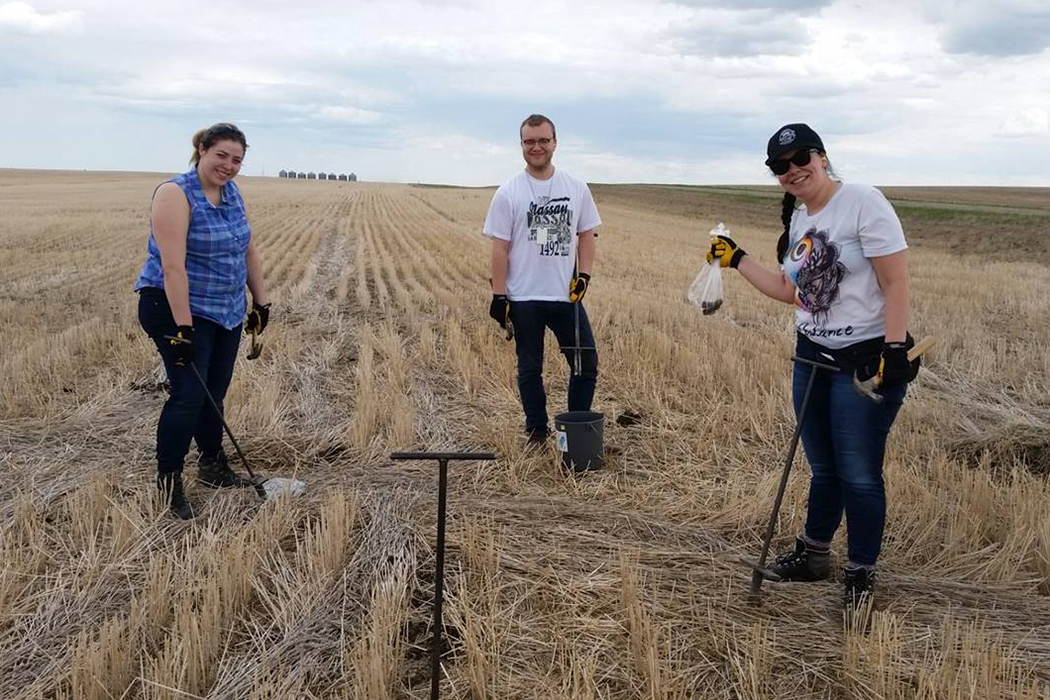There may be fewer wheat midge flying around fields this spring. According to the recently released annual forecast maps, there is a decreased risk of the pest that is known to cause yield and quality losses.
“The 2022 map is mostly green, which indicates midge levels of less than 600 per square metre. That’s good news for farmers,” says Dr. Tyler Wist, research scientist of field crop entomology with Agriculture and Agri-Food Canada in Saskatoon. Midge damage is still possible at this level, but risk is considerably reduced.
In past years, red pockets dotted the forecast maps, flagging areas of more than 1,800 midge per square metre, the most threatening level. In this year’s maps, only areas around Camrose Country, Alberta and the north-central region of Saskatchewan are shaded yellow and orange, which warns of potential for increased risk.
While the provincial maps are a good indicator for growers and agronomists of what’s to come, Mother Nature has the final say. Moisture – at least 25 mm of accumulative spring rainfall – ultimately determines the timing and severity of a midge infestation.
Keep scouting
Wist says that although the forecast for 2022 ‘looks rosy’ for growers, he clarifies that doesn’t mean they can forget about the pest. Wheat producers should assess risk based on their own field situation.
“The forecast maps are based on somebody’s field in your neighborhood – it’s not based on your individual field. If you’ve got low pockets in your fields, you might have a wheat midge problem that you don’t know about unless you go out and look for it. It’s important to keep scouting.”
Growers should plan to inspect fields for midge regularly as wheat heads emerge in late June and early July. Female midge lay eggs on the developing wheat heads. They are most active on warm, calm evenings and only live for four to five days, which makes scouting timing critical.

Heather Bird takes a soil core sample for the Alberta wheat midge forecast. Photo courtesy of Shelley Barkley, Alberta Agriculture and Forestry.
Getting a complete picture
Forecast maps are put together annually based on data from soil core surveys conducted in the fall. Samples are taken in wheat stubble and then analyzed back in the lab to determine the density of overwintering wheat midge cocoons. But now they’re just one piece of the puzzle for understanding midge populations.
A new annual initiative is helping to “ground truth” the forecast maps. Midge Busters is an in-season monitoring network developed by Wist and SeCan. It involves volunteers across the Prairies (SeCan members and staff as well as independent agronomists) using pheromone traps to count and report midge activity in real time during the growing season.
Wist is currently comparing the forecast maps with the Midge Busters reports. Preliminary results show that some of the hot spots on the 2021 maps did not lead to the expected midge pressure. Taking a closer look at weather data in these areas reinforces the role of moisture in midge infestations – there simply wasn’t enough to activate midge out of the ground.
More savings with midge tolerant varieties
While some growers look to forecasting to help manage wheat midge, others plan to plant midge tolerant wheat varieties regardless. These growers value the peace of mind and savings per acre in both time and money by not having to spray for the pest.
In 2010, research showed that growers saved $36 per acre when planting Midge Tolerant Wheat. Todd Hyra, SeCan Business Manager Western Canada, recently crunched the numbers based on 2021 data. “Using the same threshold damage of 15%, we calculated new savings to reflect current yield averages and wheat prices. Growers could now save $94.50 per acre when they use a Midge Tolerant Wheat variety,” he says. (This calculation is 15% x 70 bushels per acre x $9 per bushel.)
For Midge Tolerant Wheat growers who want to continue to realize this savings, following proper stewardship protocols is necessary to keep the technology viable for future. This means limiting the use of farm-saved seed to one generation past Certified. This practice maintains the interspersed refuge and prevents the build-up of a resistant midge population. Midge Tolerant Wheat also plays a role in reducing the overall midge population, which helps to keep the forecast maps green.

Tyler Wist’s summer students, Gabrielle Lee, Stean Kury and Michaela Merasty, take soil cores for wheat midge field assessments.
